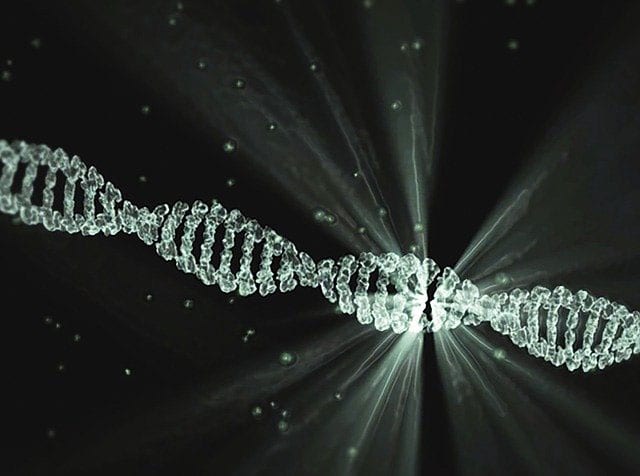By Danielle Bradshaw from In The Cloud Copy
Scientific teams at the Centers for Disease Control (CDC), the National Institute of Environmental Health Sciences (NIEHS), and other research centers have discovered how mutations can sometimes happen inside of rubella viruses.
What Is Rubella and How to Defend Against It
Symptoms of rubella can include fever, sore throat, and a characteristic red rash that develops among the face and body. The illness can be especially dangerous for expectant women.
There’s one particular ailment called congenital rubella syndrome – a series of birth defects that cause skin lesions, small jaw size, enlarged liver, and low birth weight. Protection against rubella comes in the form of the measles-mumps-rubella (MMR) vaccination; the weakened rubella strain inside of it can provide some resistance to the disease.
What the Research Revealed
The research was done with cells from people who have primary immunodeficiency diseases (PIDs) which are disorders where parts of the body’s immune system are either not properly functioning or missing entirely. The term “primary” in this case means that the deficiency isn’t caused by medications, exposure to harmful substances/toxins, or another disease. During the study, it was found that participants with PID could end up with a highly mutated, vaccine-derived rubella strain.
What the researchers found surprising was that the mutations within the virus were, for the most part, caused by the same human proteins that cause certain cancers to mutate. These proteins – called APOBEC cytidine deaminases, are what protect the body from viral infections and can modify DNA and RNA. Their findings were published online on October 28th in the PLOS Pathogens journal.
Collaboration With the CDC
The CDC’s rubella virus research team, with Lumilda Perelygina, Ph.D., and Joseph Icenogle, Ph.D., acts as both a national and international reference laboratory. It’s here that they study the epidemiology (causes and factors behind diseases and health trends) and biological properties of the viruses. The researchers also focus partly on how persistent rubella infections can be. Dr. Perelygina explained teamwork helped advance research.
“Collaboration between the team’s at CDC and NIEHS allowed studies of rubella persistence to be extended to fundamental observations about the generation of rubella virus variants,” she said.
Modifying DNA and RNA
The researchers, still working with the patients with PID, then took biopsies of inflamed skin nodules called granulomas. The team led by the CDC saw that the RNA genomes or the genetic material inside of rubella viruses in patients with PID differed greatly from the genomes in the MMR vaccine. They were able to confirm that the APOBEC proteins caused nearly all of the observed changes.
Before these particular tests, the NIEHS team had published research about APOBECs in both a 2012 paper and a 2013 follow-up study. Additionally, the scientists discovered that APOBECs not only attack viruses but also play a role in cancer development.
“We found that APOBEC proteins were responsible for 80-90% of DNA mutations in bladder and cervical cancers, and 20-30% of mutations in head and neck, breast, and lung cancers,” replied Dmitry Gordenin, Ph.D., head of the NIEHS Mechanisms of Genome Dynamics Group.
This new research – which is only a small part of a larger rubella virus study – is the first to report on the APOBEC-induced mutations of rubella viruses in human cells. Icenogle says that controlled research studies are now needed to assess the public health impact of viruses from people with PID.
APOBECs Versus ADARs
APOBECs and a set of related proteins, known as adenosine deaminases acting on RNA, otherwise known as ADARs, are able to attack virus RNA. Scientists weren’t certain whether or not APOBECs or ADARs were the culprit behind the most mutations; in other words, which one was the more “powerful” attacker.
Gordenin developed tools to analyze mutations inside of DNA which allowed team members to spot and pinpoint the source of mutations in RNA from PID rubella viruses. As it turns out, there were many more mutations that came from APOBECs rather than ADARs.
The fact that there are APOBEC enzymes that can cause inflammation provides new evidence that links inflammation and viral RNA mutations. This knowledge might just lead to new methods of disease control and prevention.
Check out the original article here.
Check out the original study here.





